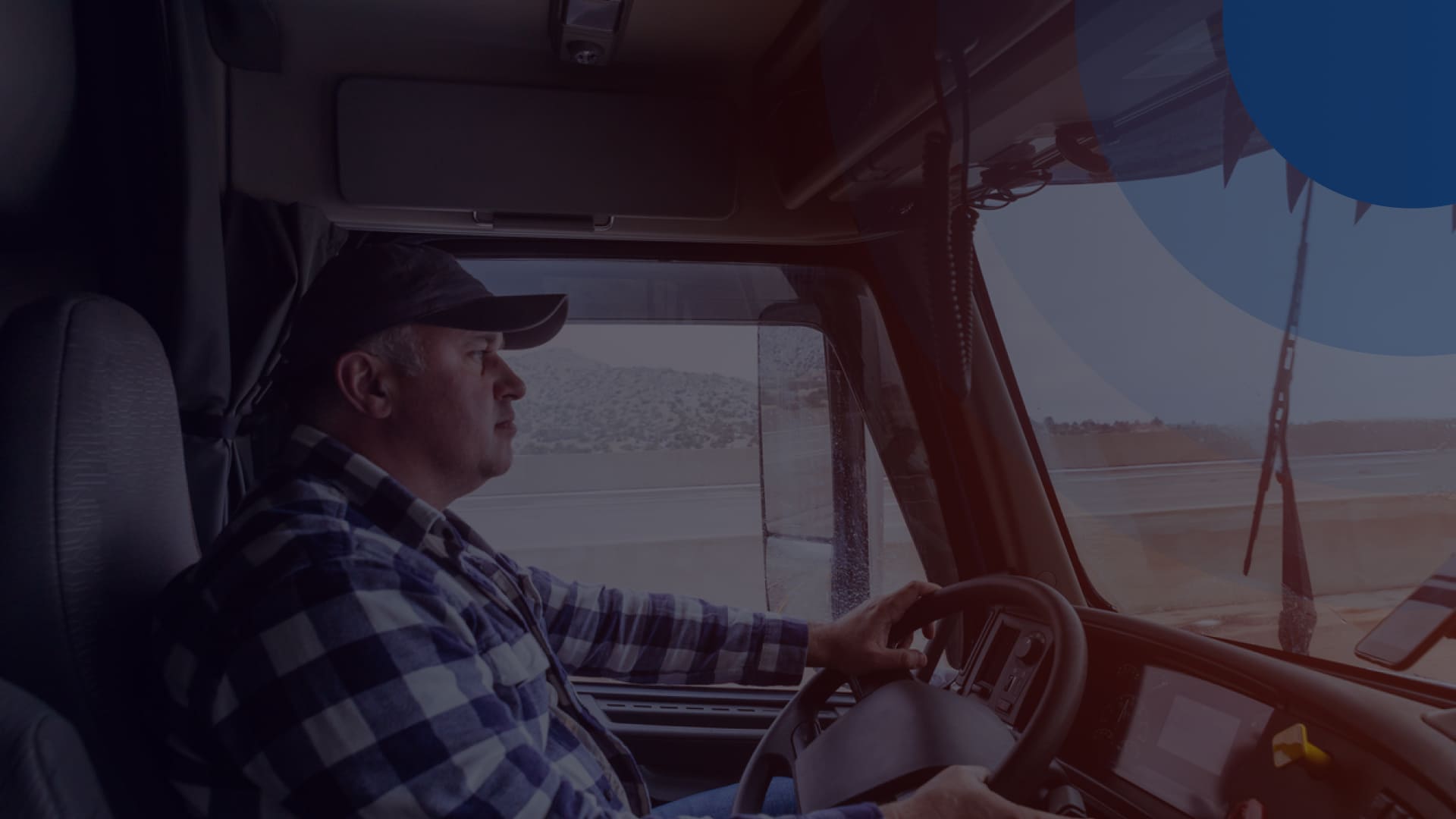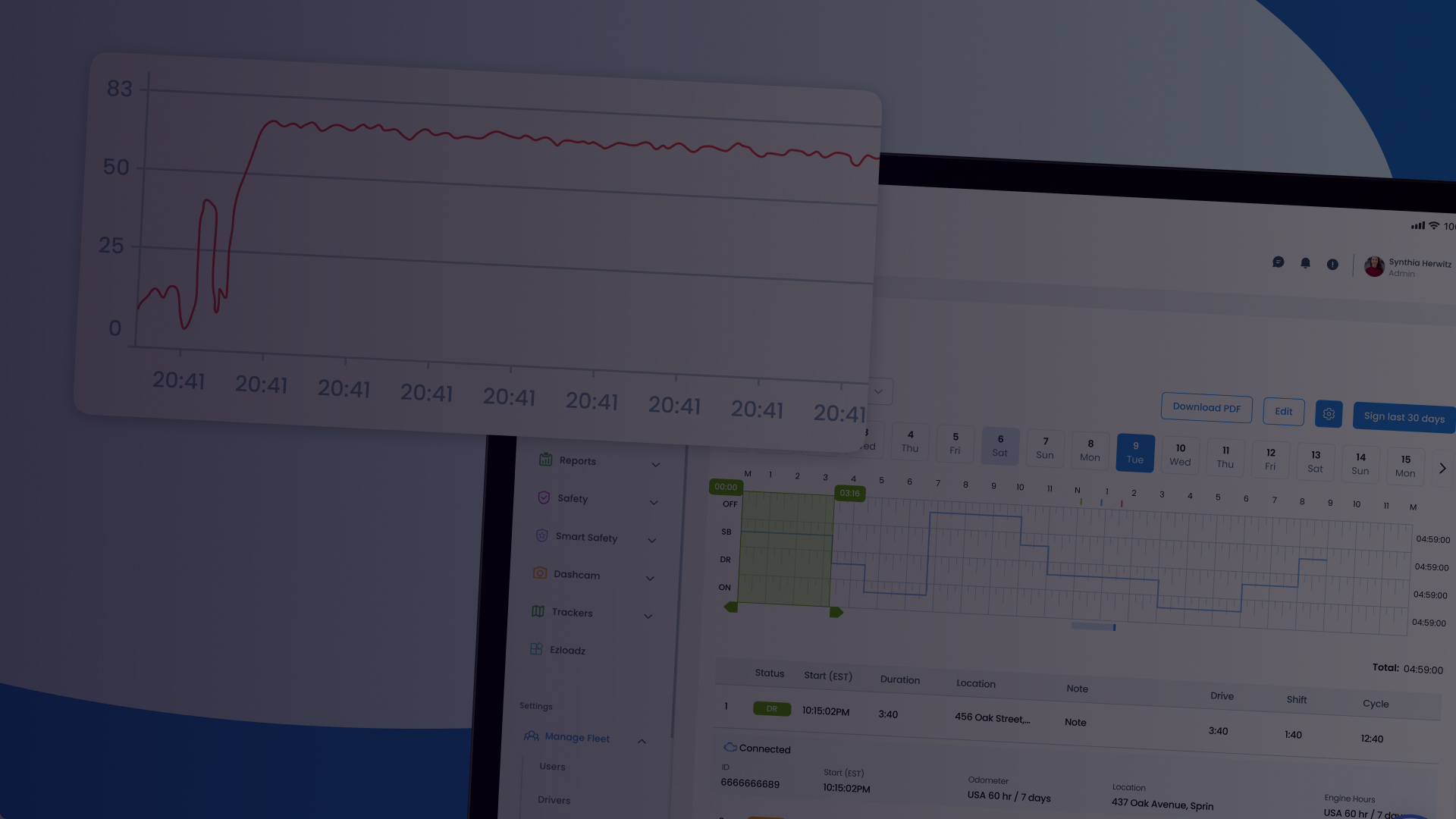Truck dispatching is no longer a back‑office afterthought. It is a frontline revenue and compliance function that keeps America’s 3.5 million heavy‑duty trucks rolling. Capacity is tight, detention fees are rising, and a single missed Hours‑of‑Service log can wipe out a week’s profit on one lane.
Yet barriers to entry remain refreshingly low: you can launch a dispatch business from a spare bedroom armed with little more than industry know‑how, negotiation chops, and the right software stack.
This guide highlights how to become a professional truck dispatcher and use an all‑in‑one platform like Ezlogz to turn regulatory headaches and load‑board chaos into a smooth workflow. Read on for more!
What Does a Truck Dispatcher Do?
Truck dispatchers coordinate freight between shippers and drivers. Their job involves managing schedules, handling documentation, tracking loads, and resolving delivery issues. Daily tasks include:
| Key Task | Real‑World Example | Impact |
| Load sourcing | Refreshing DAT, Truckstop, and private shipper feeds, then calling brokers to cover a 42 000‑lb refrigerated lane Chicago → Dallas. | Direct revenue driver; strong rates keep carriers loyal. |
| Driver scheduling | Matching drivers’ remaining HOS with pickup windows; updating ELD status codes via Ezlogz. | Cuts HOS violations; boosts on‑time‑delivery (OTD). |
| Route optimization | Using GPS + toll data to choose I‑55 over I‑57 to avoid a 30‑mile detour. | Reduces fuel and detention exposure. |
| Issue resolution | Re‑booking storage when a consignee refuses a live unload at 23:00. | Preserves carrier and broker relationships. |
| Compliance oversight | Verifying that every BOL, rate confirmation, and lumper receipt is uploaded to a cloud‑archive. | Keeps audits painless and speeds invoicing. |
In short, a dispatcher is equal parts broker liaison, operations analyst, customer‑service rep, and HOS enforcer.
Do You Need a License to Become a Dispatcher?
Good news: the FMCSA does not require a standalone license to dispatch trucks owned by someone else. However, three legal factors can trigger extra paperwork:
- Brokerage crossover. If you solicit freight directly from shippers and “re‑sell” it to carriers, you slide into property broker territory. You will need:
- FMCSA broker authority (Form OP‑1);
- $75 000 surety bond (BMC‑84) or trust (BMC‑85);
- Process agent designations (BOC‑3).
- Carrier ownership. Dispatchers who also own trucks must obtain an MC Number, USDOT registration, and proof of cargo/liability insurance.
- State requirements. Some jurisdictions, notably California and New York, require a basic business license or home‑office zoning clearance even for remote dispatchers.
Pro tip: launch as a dispatcher first, build networks, then consider broker authority once cash flow stabilizes. The ELD provided by Ezlogs also helps with communication and compliance.
How to Become a Truck Dispatcher in 2025
Check out this step-by-step roadmap for starting your career in dispatching — either independently or as part of a logistics team. We cover the key elements that will help you start working with ease.
Step 1: Learn the Industry Basics
Before you begin dispatching loads, it’s critical to understand how the trucking industry operates.
- Study logistics and freight brokerage
- Learn the terminology: MC number, BOL, HOS, and rate confirmations
- Understand DOT compliance and ELD rules
- Get familiar with tools like Ezlogz for tracking, messaging, and ELD reporting
- Watch tutorials and take dispatcher training courses
Step 2: Choose Between Company or Freelance Dispatching
Decide whether you want to:
- Work in-house at a transportation company
- Launch your own dispatching business from home
Each has its benefits. Freelancers have more flexibility, while company dispatchers may receive benefits and a stable income.
Step 3: Set Up Your Home Office
A productive home office still costs less than one month’s rent on a traditional office space:
- Hardware:
- Laptop or desktop with 16 GB RAM (load boards are browser‑heavy);
- Dual monitors for juggling load boards, TMS, and spreadsheets;
- Noise‑canceling headset for broker calls;
- Connectivity: 100 Mbps+ wired internet plus LTE backup hotspot.
- Software stack:
- Ezlogz for real‑time ELD feeds, HOS math, and document capture;
- Subscription to one or two premium load boards;
- Cloud storage (Google Drive, Dropbox) with folder templates for BOLs, rate cons, and invoices;
- Accounting platform (QuickBooks, Wave) tied to a dedicated business checking account.
- Workspace ergonomics: adjustable chair, task lighting, and a whiteboard for daily load status.
Step 4: Build Carrier Relationships
Your success depends on your network. Carriers want dispatchers who can consistently find profitable loads and manage routes efficiently. Win truck owners over by demonstrating three value pillars:
- Revenue maximization. Show historical RPM (rate‑per‑mile) improvements you’ve achieved on similar lanes.
- Hassle reduction. Handle detentions, lumper pay, and after‑hours check‑calls, so drivers can focus on the road.
- Compliance safety net. Leverage Ezlogz’s ELD data to alert drivers before they hit an HOS cliff and to flag maintenance codes early.
Action plan to grow your network:
- Attend the Mid‑America Trucking Show, TIA Capital Ideas, and regional Roundtable events.
- Cold‑call owner‑operators advertising on Facebook groups and Craigslist.
- Offer a first‑week‑free trial where you waive dispatch fees if you fail to raise average RPM by at least 5%.
Step 5: Master Load Boards and Negotiation
Your income rides on the spread between broker‑posted rates and the numbers you lock in for carriers.
- Daily routine: scan preferred load boards at 08:00 and 13:00 (rate spikes often follow noon cancellations);
- Rate research: compare market averages on tools like DAT Trendlines or FreightWaves SONAR before dialing brokers;
- Negotiation script: open with urgency (“I have a truck 30 miles away, empty in one hour”), back it with data (“market average is $3.15/mile today”), and close with value (“We’re ELD‑compliant; check‑calls every two hours”);
- Paper trail: immediately email a rate confirmation; then upload it to Ezlogz for automatic archiving, attached to that truck’s trip ID.
Must-Have Skills for Dispatchers
Being organized is just the start. Successful truck dispatchers also have the following skills:
| Core Skill | Why It Matters | How to Build It |
| Communication | Brokers reject terse or ambiguous updates; drivers need plain‑English directions. | Record and review calls; aim for 30‑second concise updates. |
| Multitasking | Dispatchers juggle up to 15 active loads simultaneously. | Use color‑coded Kanban boards or Ezlogz’s dashboard filters. |
| Data literacy | Reading HOS graphs, fuel surcharges, and market rate charts separates pros from amateurs. | Complete a short Excel course and study your ELD analytics weekly. |
| Stress management | Late‑night breakdowns happen; calm heads keep shippers. | Develop SOPs and escalation trees to follow under pressure. |
How Ezlogz Helps New and Experienced Dispatchers
Ezlogz eliminates the manual juggling that slows most dispatchers down. From one secure dashboard you can see truck locations, remaining driver hours, and paperwork status in real time.
- Real‑time GPS with route planning;
- Automated ELD compliance and FMCSA reports;
- In‑app messaging that replaces scattered texts and calls;
- Cloud storage for BOLs, rate sheets, and invoices.
With the administrative load reduced, you can spend your energy negotiating stronger rates and keeping carriers on schedule. Start your trial with Ezlogs today to test it out in your workflow.
Can You Start a Dispatching Business from Home?
Yes! Many dispatchers today operate remotely. With minimal startup costs (laptop, phone, internet, Ezlogz), you can launch a fully functional dispatching service right from your living room. Just remember to:
- Register your business (most freelancers choose an LLC);
- Open a dedicated business bank account to separate finances;
- Invest in professional dispatch tools to ensure efficiency and compliance.
With those fundamentals in place, your living room becomes a revenue‑generating control center.
How to Stand Out in the Industry
To become a trusted dispatcher, focus on these aspects to stand out:
- Respond quickly and professionally to brokers and drivers;
- Cut deadhead miles through smarter lane planning;
- Listen to driver needs and build long‑term loyalty;
- Leverage Ezlogz analytics to demonstrate measurable savings.
Consistency and proof of value turn first‑time loads into recurring contracts.
Launch Your Dispatching Career with Ezlogz
Ready to enter the logistics world? Ezlogz gives you everything you need to succeed — from FMCSA-compliant ELD tools to real-time fleet management features. Whether you’re dispatching a single truck or managing a fleet, our platform keeps your operations running smoothly.Get started with Ezlogz today and take your dispatching career to the next level.











Comments